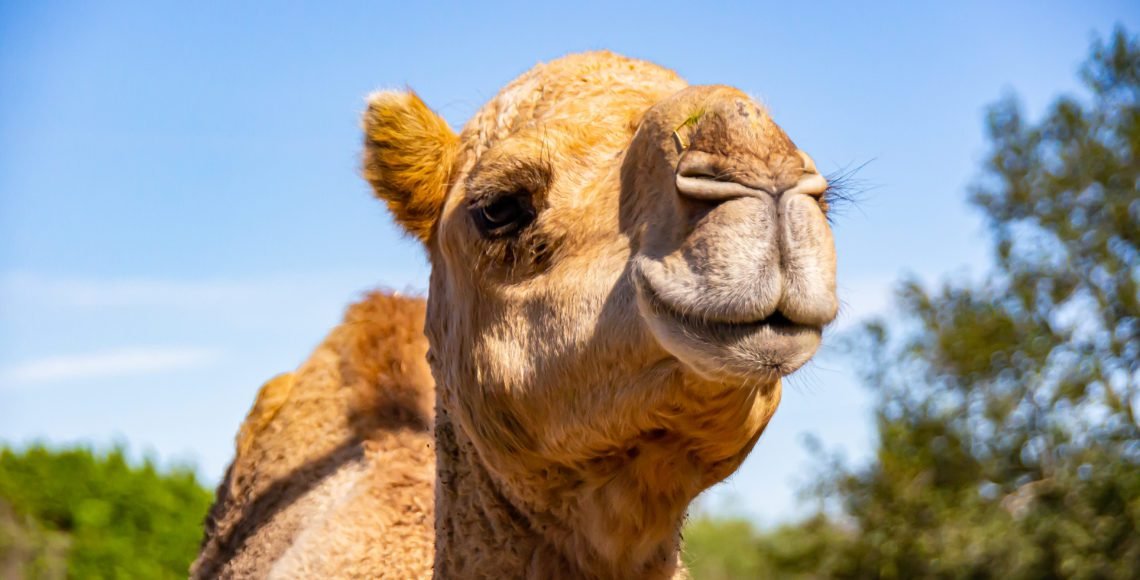Riding a camel is one of those experiences that feels straight out of an ancient storybook.
Whether you’re exploring the Moroccan Sahara, the dunes of Rajasthan, or taking a tourist ride in Dubai, there’s something majestic (and slightly surreal) about sitting nearly two meters above the ground on the back of a long-legged, hump-backed beast.
But if you’ve never done it before, the idea of riding a camel might be a bit intimidating. Unlike horses, camels move differently, behave differently, and come with their own unique quirks. So, before you hop on that hump, here’s everything you need to know about how to ride a camel safely and enjoyably.
First Things First: Meet the Camel
Camels are often called the “ships of the desert” — and for good reason. They’re built for long journeys across hot, dry landscapes, with thick fur to protect them from the sun, and the ability to go days without water. There are two main types of camels:
- Dromedary Camels: These have one hump and are commonly found in the Middle East and North Africa.
- Bactrian Camels: These have two humps and are native to Central Asia.
Most tourist camel rides use dromedaries, and it’s on that single hump (fitted with a specially designed saddle) where you’ll be sitting — about two meters off the ground!

Step 1: Get Comfortable With the Camel
Before you ride, take a moment to stand beside the camel and observe. They’re generally calm and patient animals, but they can be vocal — expect a few grunts, snorts, or groans, especially when they’re getting up or sitting down.
Let the camel sniff your hand if you like — it’s a way of saying hello in camel language. And always approach from the side, not from behind.
Step 2: Mounting the Camel
Now here comes the tricky part — getting on. Unlike horses, you don’t climb onto a camel while it’s standing. Instead, the camel will be seated on the ground, legs folded beneath it. A handler or guide will usually be there to help you.
Here’s how to mount:
- Wait until the camel is fully seated.
- Swing one leg over the saddle, sitting gently onto the seat.
- Hold the handle or front of the saddle (often there’s a T-bar or pommel to grip).
Now brace yourself, because…
Step 3: The Camel Stands Up (Hold On!)
When the camel stands up, it does so back legs first, then front legs. This movement pitches you forward and then sharply backward, which can catch you off guard if you’re not ready.
Lean back slightly when the camel starts to rise, hold the saddle firmly, and let the movement happen naturally. Don’t stiffen up — staying relaxed actually helps you keep your balance better.
Step 4: Riding the Camel
Once the camel is upright, you’ll be about two meters (6 to 7 feet) off the ground, swaying gently as the camel walks. The motion is different from riding a horse — camels have a rolling gait that feels like a slow-motion rocking chair.
Here are some tips to ride comfortably:
- Keep your back straight and your legs relaxed.
- Go with the flow of the movement rather than trying to resist it.
- Use the stirrups or foot rests (if available), but don’t rely on them too much.
- Hold the saddle firmly, especially if you’re riding downhill or on uneven terrain.
Most camel rides are slow and steady, perfect for enjoying the scenery and snapping a few unforgettable photos.
Step 5: The Camel Sits Down (Again, Hold Tight!)
When the ride ends, the camel will kneel to let you off — and again, it’s a jerky movement.
This time, the front legs go down first, then the back legs. You’ll feel like you’re suddenly tipping forward, so be ready.
Lean back, hold the saddle grip, and don’t try to jump off until the camel is fully on the ground and your guide gives the okay.
What to Wear and Bring
Riding a camel is usually done in sunny, dusty environments, so dress the part:
- Wear long pants — camel saddles can be rough, and shorts may cause chafing.
- Closed-toe shoes are better than sandals.
- A hat and sunglasses protect you from the sun.
- Bring water, especially if the ride is over 30 minutes.
- Use sunscreen, even if it’s cloudy — desert sun is sneaky.
- A scarf or bandana is handy for dust or wind protection.
Fun Camel Facts
- Camels can close their nostrils to keep out sand during storms.
- They can drink up to 40 gallons of water in one go.
- Despite their grumpy noises, camels are actually very intelligent and sensitive animals.
Is It Safe?
Yes — as long as you follow the guide’s instructions. Camels used for tourism are usually well-trained and accustomed to people. That said, it’s always important to:
- Listen to your guide.
- Avoid loud noises or sudden movements.
- Treat the camel respectfully (they’re living beings, not machines).
If you’re concerned about animal welfare, look for ethical tour operators who care properly for their camels — they should appear well-fed, hydrated, and free from visible injuries.
Final Thoughts
A camel ride is more than just a fun photo opportunity — it’s a chance to connect with an ancient mode of travel and experience the desert the way nomads have for centuries. From the moment you rise two meters into the air to the slow, rhythmic sway across the sand, it’s an experience that stays with you long after the ride is over.

